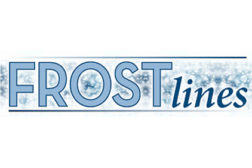Refrigeration
Montreal Protocol Amendment Would Phase Down HFCs in India
Read More
Carefully Embracing Flammable Refrigerants
Additional Uses for Flammables Require Approval Process
Read More
Packaged Low-Charge Ammonia System
Factory-Assembled, ‘Plug-and-Play’ System Suitable for Many Applications
May 4, 2015
ASHRAE Offers Advanced Energy Design Guide for Grocery Stores
Free Download Addresses Unique Design Challenges
May 4, 2015
Emerson Approves DuPont Opteon XP40 and XP10 Refrigerants
Low-GWP Refrigerants Approved for Scroll, Semi-Hermetic Compressors
May 4, 2015
A Folk Hero? Congressman Pens Tough Letter to EPA
Kentucky Rep Expresses Concerns over HFC Delistings
May 4, 2015
April 22, 2015: CSB Releases New Ammonia Refrigeration Safety Video
Video Discusses How to Prevent Hydraulic Shock in Ammonia Refrigeration Systems
April 22, 2015
April 20, 2015: New Zero-Emission Transport Refrigeration Technology Begins Trials
Liquid Nitrogen-Powered Technology Is an Alternative to Diesel Refrigeration Units
April 20, 2015
April 16, 2015: Advanced Energy Design Guide for Grocery Stores Available for Free Download
Provides an Integrated Approach That Looks at the Building Holistically
April 16, 2015
Copyright ©2025. All Rights Reserved BNP Media.
Design, CMS, Hosting & Web Development :: ePublishing






